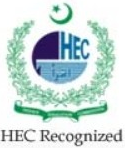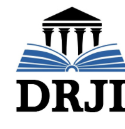Seasonal and Spatial Patterns of Habitat Use by Royle’s Pika (Ochotona roylei) in Jagran Forest Range of District Neelum, Azad Jammu and Kashmir, Pakistan
DOI:
https://doi.org/10.63147/krjs.v2i2.29Keywords:
Royle's Pika, Jagran Forest Range, Habitat use, Rocky talus, HimalayasAbstract
Royle's pika (Ochotona roylei) is an important species in the Himalayas. Understanding the relationships between this species and its environment is essential for its sustainable management. The current study was conducted in the Jagran Forest Range, a potential area of Royle’s pika distribution in the Neelum district of Azad Jammu & Kashmir (AJ&K). To examine how Royle's pika uses and prefers its habitat, indirect signs, such as counting pellet groups, and direct observations using a focused scan-sampling method were employed. To understand the seasonal patterns of habitat use, surveys were conducted in three different seasons: summer, monsoon, and autumn, from April to November 2022. The habitat preference and other topographic factors, such as elevation, slope, aspect, and plant cover, were analyzed in three major localities and nine different types of habitats within the study area. Royle’s pika was observed to be distributed in 86 out of 159 sampling sites in the Jagran Forest Range, within an altitudinal range of 2663-4282 meters above sea level (asl). The use of different habitat types by Royle’s pika was significantly different among the three seasons (F = 28.11; df = 2, 16; p<0.001). Pikas predominantly use higher altitudes (3000 – 3500 m) with significant differences among seasons (F = 45.133; df = 2, 12; p<0.001) and localities (F = 71.912; df = 2, 12; p<0.001). Moreover, they showed a high preference for herbs in the study area (IEI = 0.238). Royle’s pika appears to select habitats which provide both food and cover simultaneously regardless of the season.
Downloads
Published
Issue
Section
License
Copyright (c) 2023 Ghulam Ali, Nasra Ashraf, Shahida Rasheed, Saba Khalid, Rukhsana Khatoon, Nuzhat Shafi, Nousheen Irshad, Sidra Qayoom

This work is licensed under a Creative Commons Attribution-NonCommercial 4.0 International License.
This work is licensed under CC BY-NC 4.0







